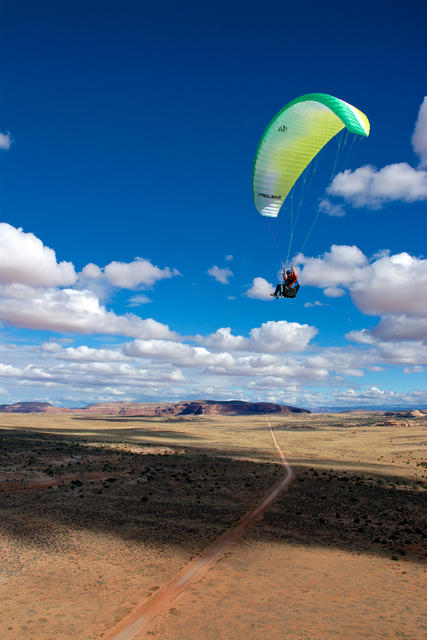The Gin Atlas paraglider is suitable for intermediate pilots. In terms of comfort, ease-of-use and safety, the Gin Atlas sits at the middle of the EN B class. Yet the climb and glide performance in challenging conditions is ideal for long XC flights and has to be experienced to be believed. ( we have experienced and we believe! @axis) Gin also made an additional official EN test with the Atlas and the Genie Lite pod/coccon harness, and also achieved exactly the same results as with a conventional harness. This is important because some wings can be less stable with cocoon harnesses and this is not reflected in official EN testing procedures.
Optimized (EPT) airfoil for stability and performance
Gin developed EPT (Equalized Pressure Technology) using CFD (Computational Fluid Dynamics) analysis to optimize several important parameters of the airfoil. With EPT, the Gin Atlas inflates more easily, climbs better in thermals and is more stable in turbulence and at speed. In addition, the Gin Atlas paraglider has a lower stall speed and reduced deep stall tendency. Overall, the result is an airfoil with inherently lower drag that simply flies better in all aspects.
Exceptional handling for efficient climbing
The handling of the Gin Atlas strikes a perfect balance. It's comfortable and reassuring, yet gives you enough feedback to accurately feel the air. The Gin Atlas paraglider wing helps you find the thermals with its excellent seeking behavior, and when you enter a thermal it cuts through the air and stays solid above your head.
Long and progressive brake travel for a wide safety margin
The Gin Atlas has a long and progressive brake travel. The wing responds to small brake inputs with precision, yet is forgiving if you pull the brakes over-enthusiastically. The brake travel of around 80cm and extremely high brake pressure approaching the stall point makes it virtually impossible to accidentally stall the wing. The Atlas also retains its energy even when flown quite slowly—an advantage when you want to land in a tight spot, or maximize your climb rate.
Technical details
- Optimized airfoil with Equalized Pressure Technology (EPT) for stability and performance
- Reduced line consumption: 3 risers / 2 main lines spanwise
- New internal construction with cross spar maintains even sail tension
- Nylon rods in top sail trailing edge minimize sink rate and improve acceleration
- New low friction rings on the brake lines provide smooth operation and prevent twisting
- Split 'A' risers for easy big ears
- Mini-ribs on the trailing edge improve handling and performance
- Kickdown speed system with Ronstan pulleys
- Gathering (reefing) system on the trailing edge
- Nylon rods are soft, shape-retaining and durable, but can be easily replaced if necessary
Specifications
| |
Extra Small |
Small |
Medium |
Large |
Extra Large |
| Flat Area (m2) |
23.09 |
25.14 |
27.28 |
29.51 |
31.82 |
| Flat Span (m) |
10.96 |
11.43 |
11.91 |
12.38 |
12.87 |
| Flat A/R |
5.21 |
5.21 |
5.21 |
5.21 |
5.21 |
| Proj Area (m2) |
19.9 |
21.67 |
23.51 |
25.43 |
27.42 |
| Proj Span (m) |
8.76 |
9.14 |
9.52 |
9.9 |
10.28 |
| Proj A/R |
3.86 |
3.86 |
3.86 |
3.86 |
3.86 |
| Chord Root (m) |
|
2.77 |
2.89 |
3.0 |
|
| Chord Tip (m) |
|
0.7 |
0.73 |
0.76 |
|
| Cell No. |
47 |
47 |
47 |
47 |
47 |
| Weight (kg) |
5.2 |
5.6 |
5.9 |
6.3 |
6.7 |
| Weight Range (kg) |
65-85 |
75-95 |
85-105 |
95-115 |
105-125 |
| EN / LTF |
B |
B |
B |
B |
B |
(click for EN test report)
Colours





